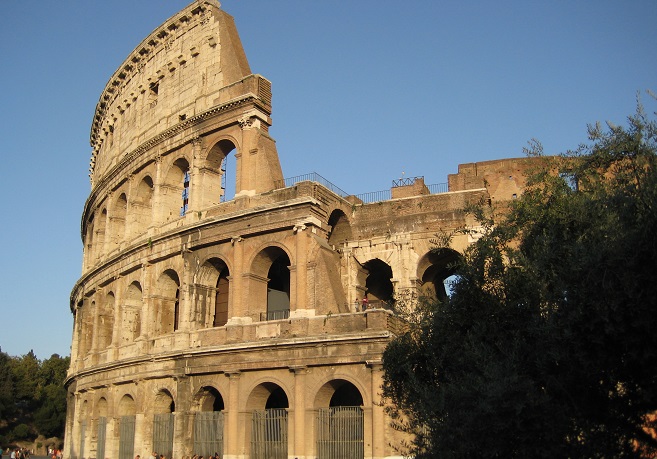
Your retro virtual vacation to Italy 2008 with Thor and me launches with a deep dive into ancient Rome and its signature Colosseum that hosted gladiatorial combat.
NOTE: Since travel is still on hold with the pandemic continuing, I’ve started a new blog series offering a virtual vacation and time-travel to my first big trip with Thor, in 2008. Italy! Starting with highlight photos posted here on Saturday, Jan. 30, I’ll continue every week. Join us in Rome, Florence, Cinque Terre, Venice, and Milan. Buon viaggio!
Those readers who’ve followed my blog series of Greek travels and history know that I inhaled everything about Greece from an early age, especially the fascinating mythology. My first big overseas trip was a months-long hippie backpacking adventure through the Greek mainland and islands, followed by many extended sojourns in the Caribbean, Central and South America, and New Zealand. So when Thor and I planned our first big trip together, I was excited to see more of Europe and the rich culture of Italy. Rome, our first stop, was instant immersion in throngs of history, art, and people.
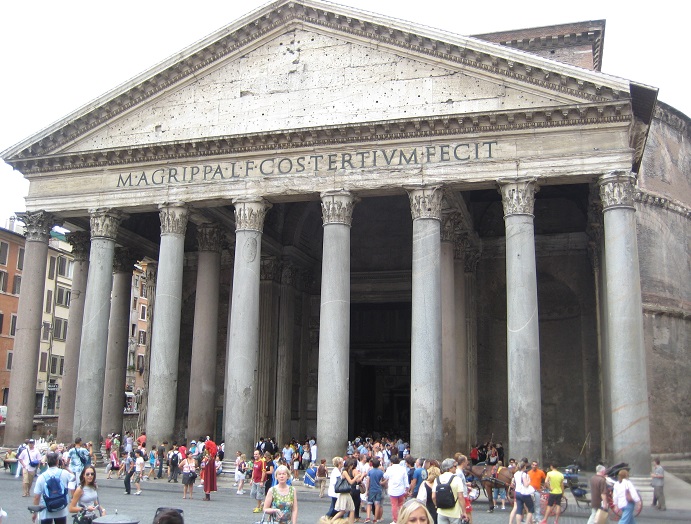
(We’ll visit the amazing Pantheon, above photo, in an upcoming post.)
Aside from a youthful fascination with “sword and sandal” movies like “Demetrios and the Gladiators” and “Ben-Hur,” I wasn’t that interested in ancient Rome. It seemed to me that the empire-building Romans had stolen most of their culture, art, and religion from the more ancient and classy Greeks. The Romans subjugated Greece in a series of wars from around 146 BC, and by 27 BC Augustus Caesar had completed the conquest. I merely dabble in history, but from what I could see, Romans were terrific engineers and soldiers, but relied on Greek models as bases for their architecture, art, and literature. Wealthy Romans hired (or bought as slaves) educated Greeks to tutor their children. Greek became the favored language in the expansive Roman empire. It seems that the Roman poet Horace agreed with me: “Captive Greece captured her rude conqueror.”
So I had only superficial knowledge of ancient Rome when Thor and I arrived in a September heat wave in the heart of Rome. The first stop in our brief stay was the ancient Colosseum, site of those famous gladiatorial battles that kept the populace entertained with free, exotic, and bloody extravaganzas.
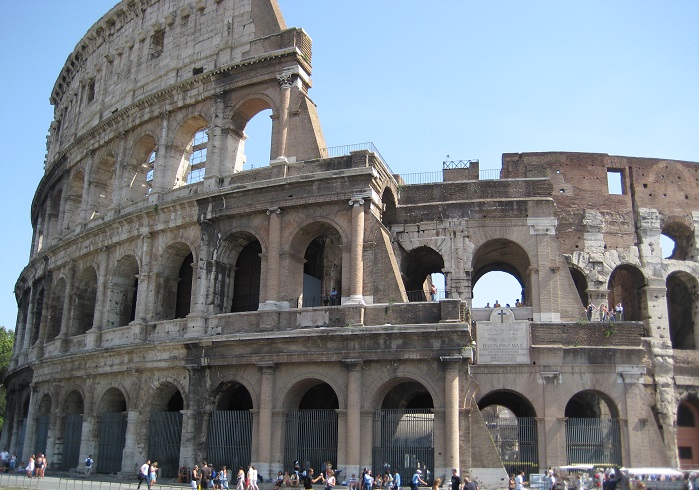
The actual name of the enormous structure was The Flavian Amphitheater. Emperor Vespasian commissioned it in 72 AD to be built on marshy grounds of Nero’s palace. At that time, a 100-foot-tall bronze statue of Nero stood outside, which colossus led to the stadium’s nickname. As mentioned, the Romans were outstanding engineers who pioneered the use of concrete, and along with the rounded arch, it enabled such a huge building — an ellipsis 615 feet by 510 feet, with walls 157 feet tall. It could hold 55,000 spectators, who entered with numbered tickets (probably pottery pieces) through 80 arched entrances to quickly find their assigned seats. The structure was designed for efficient entrances and exits of the crowds. After all the carnage (apparently attendants regularly sprayed perfumes along the aisles to mask the stench of blood), the sated spectator would exit through another assigned corridor called a vomitorium, to my thinking an appropriate term.
The Romans loved violent spectacles, and there were many similar structures throughout the empire. The Colosseum was probably the largest, and featured battles between gladiator slaves who trained and lived there as captives, as well as wild animals from the far-flung reaches of the empire. The wooden arena floor originally covered the warren of cells for gladiators and animals, which were raised by pulleys to the arena level. There were also elaborate stage sets for “themed” battles.
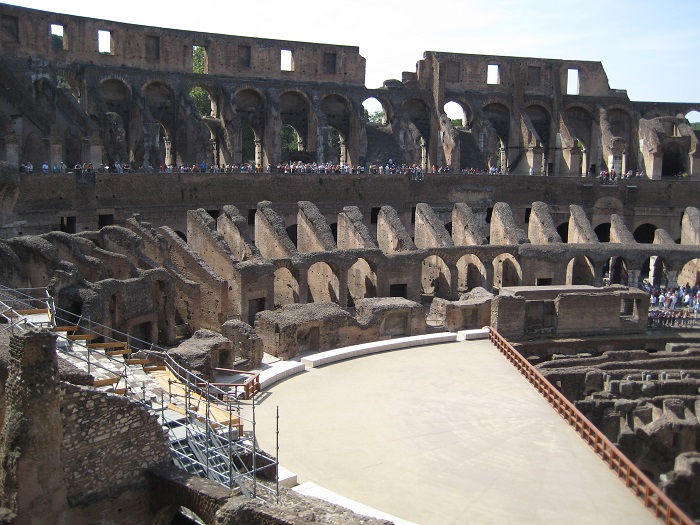
This was the “circus” part of the “bread and circuses” that the aristocrats apparently provided to keep the citizens entertained and cooperative. The shows would usually begin with trained animals performing tricks. Then came the gladiators who fought each other to the death. The emperor could decide the fate of a badly-wounded fighter by giving the thumb’s up or down, and sometimes he would let the crowd decide on life or death, to great cheers. Then came men against wild animals: lions, tigers, and bears (oh, my!), as well as crocodiles, elephants, and hippos. The inauguration of the amphitheater was a 100-day festival that saw 2,000 men and 9,000 animals killed.
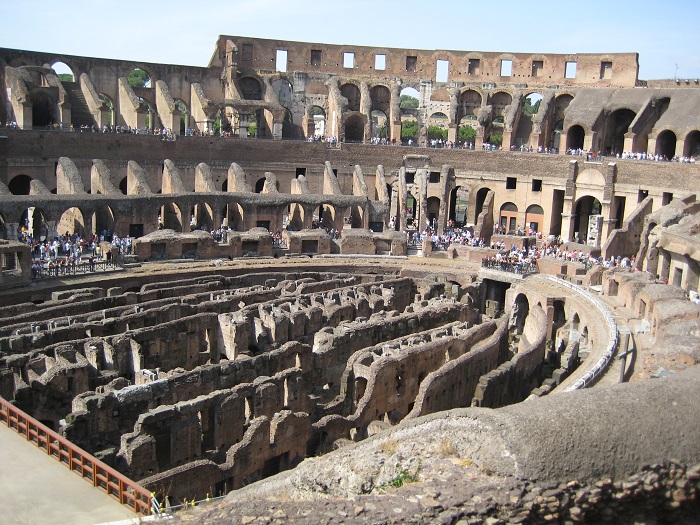
A closer look at the subterranean level:
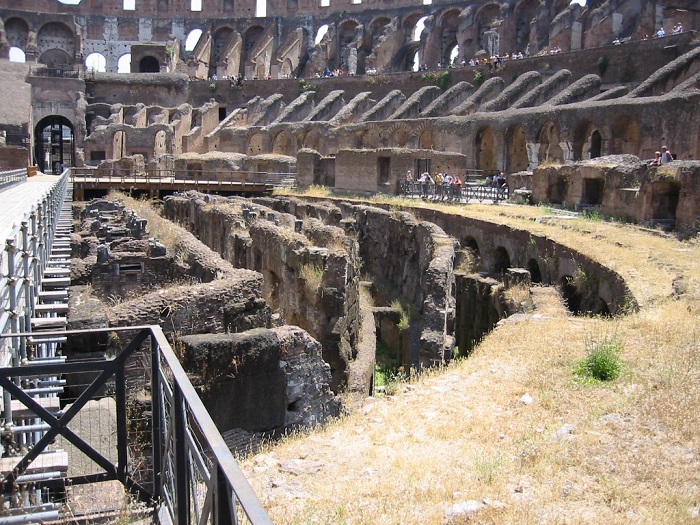
Thor is always fascinated with the structure of walls in ruins we visit.
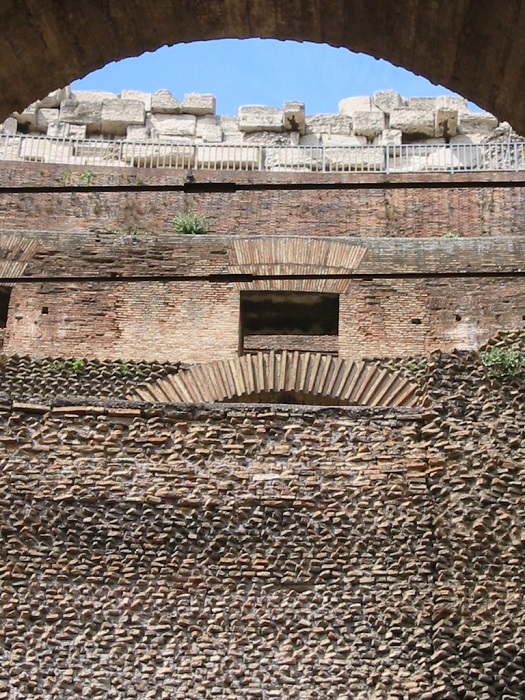
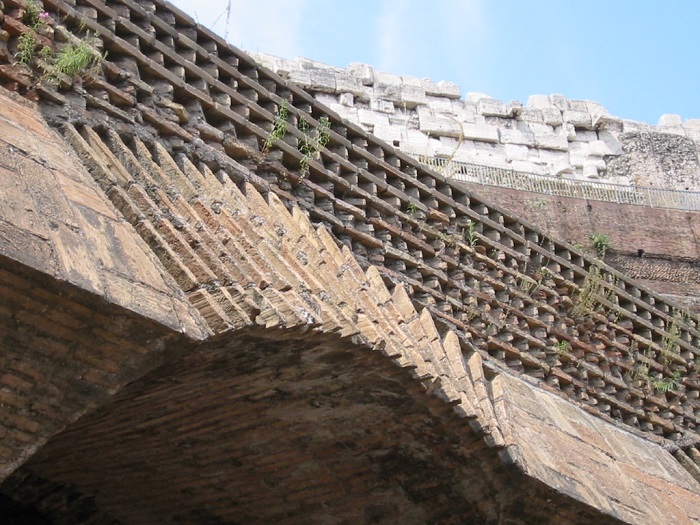
Eventually, of course, it was the pagan Romans’ turn to lose to Christianity, and the Colosseum was claimed with the erection of a cross. The Christians ended the violent games that had sometimes killed their believers. Much of the destruction of the walls ensued as builders dismantled materials to build other structures, including churches.
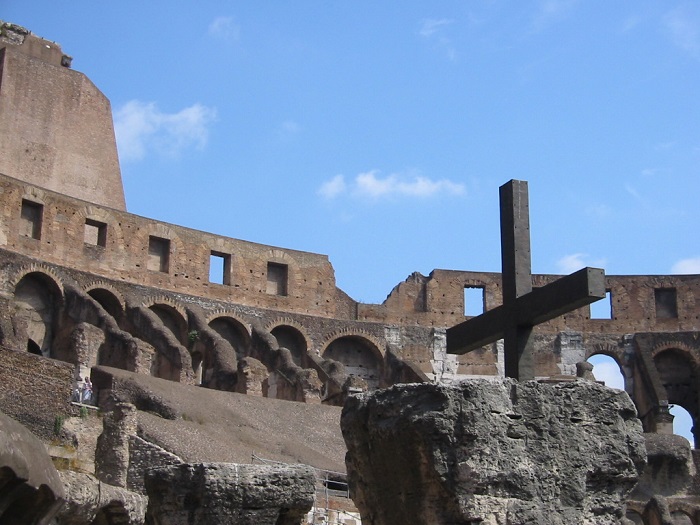
All of this vicarious violence in the scorching heat generated a powerful thirst, so Thor and I, after being “vomited” from the Colosseum, retreated to the Metro entrance just opposite, where we ordered a cold beer from a streetside cafe. Just like the stadium, it came super-sized!
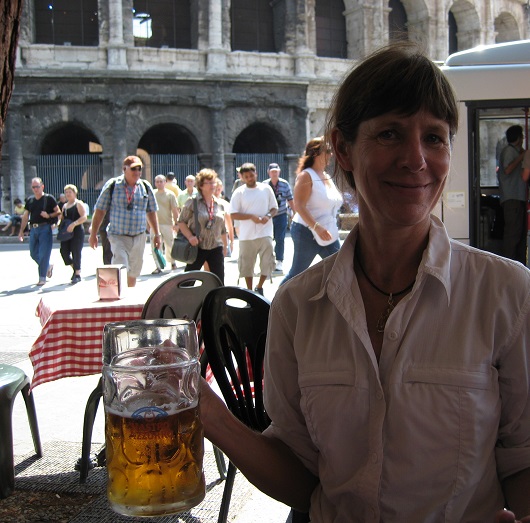
Next week, we wander through the maze of ruins in the ancient Roman Forum, glimpsed here from an upper archway of the Colosseum:
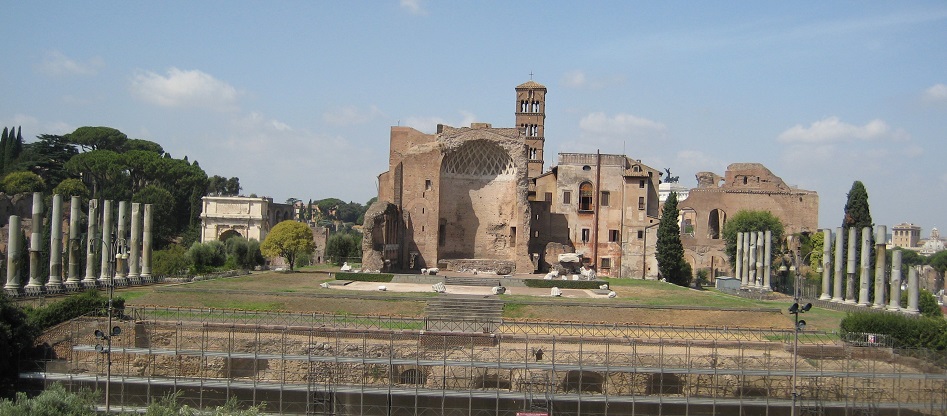
*****
You will find The Rambling Writer’s blog posts here every Saturday. Sara’s latest novel from Book View Cafe is available in print and ebook: The Ariadne Connection. It’s a near-future thriller set in the Greek islands. “Technology triggers a deadly new plague. Can a healer find the cure?” The novel has received the Chanticleer Global Thriller Grand Prize and the Cygnus Award for Speculative Fiction. Sara has recently returned from another research trip in Greece and is back at work on the sequel, The Ariadne Disconnect. Sign up for her quarterly email newsletter at www.sarastamey.com

1 thought on “The Rambling Writer’s Italy, part 2: The Roman Colosseum”